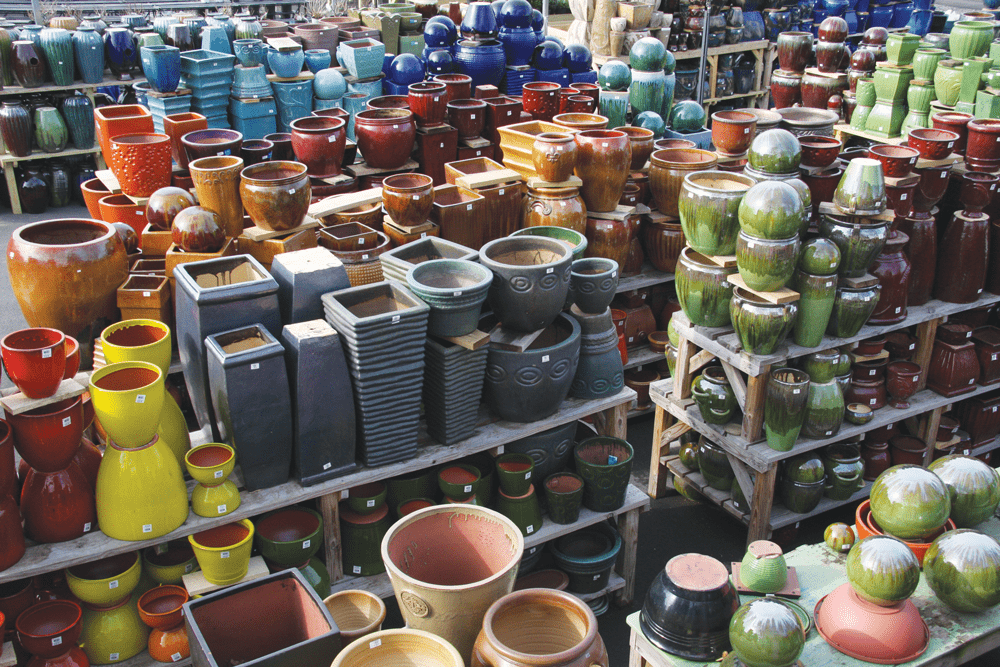Picking a pot isn’t just matching colors with curtains. Think of it as setting up a home where roots can stretch, breathe, and avoid soggy soil. Choosing the right pot means checking for drainage holes, selecting a diameter an inch or two wider than the root ball, and choosing a material that suits the plant’s thirst level and local climate.
Terracotta wicks away moisture, plastic locks it in, while fabric grow bags split the difference. This practical pot selection guide lines up the best pots for plants then caps things with proven container gardening tips so every transplant thrives.
Author’s Note: Check out our post on the Best Containers for Garden Plants Revealed for an in-depth review on choosing the right containers, pots and much more!
Why Pot Selection Matters More Than You Think
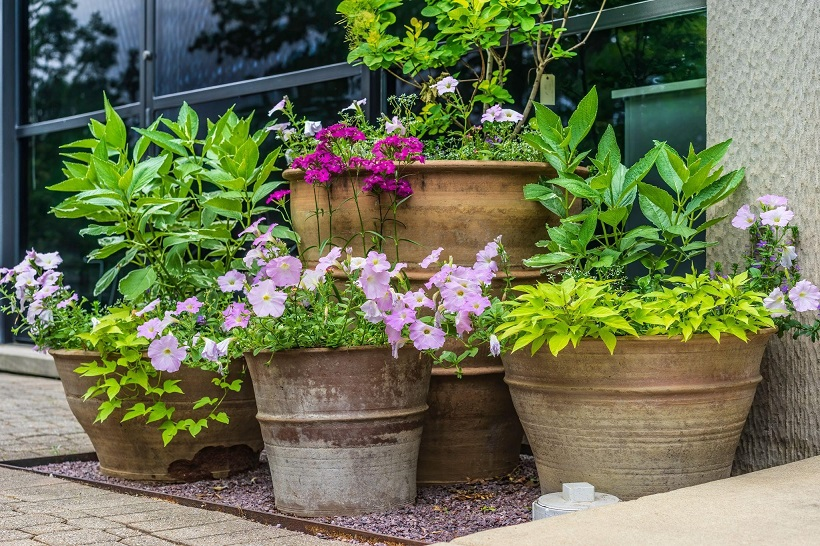
Choose the wrong pot and leaves yellow before the next watering, choose well and roots push out fresh growth for weeks. The impact of the pot on plant health begins below soil level: cramped walls force circling roots, choke oxygen, and trap excess water, while roomy, well-drained vessels keep roots breathing and sipping nutrients.
Deep, airy sides encourage vigorous root development needed for sturdy stems and fuller canopies. Material matters too. Porous clay dries fast, plastic holds moisture, so match the pot to each plant’s thirst. A smart, roomy plant container sets every seedling up for success and tops the list of gardening essentials.
Exploring Pot Materials and Their Pros & Cons
Terracotta clay tops the list for gardeners chasing the best material for plant pots in dry, hot zones. The porous walls act as natural breathable pots, wicking extra moisture so succulents and herbs avoid soggy roots.
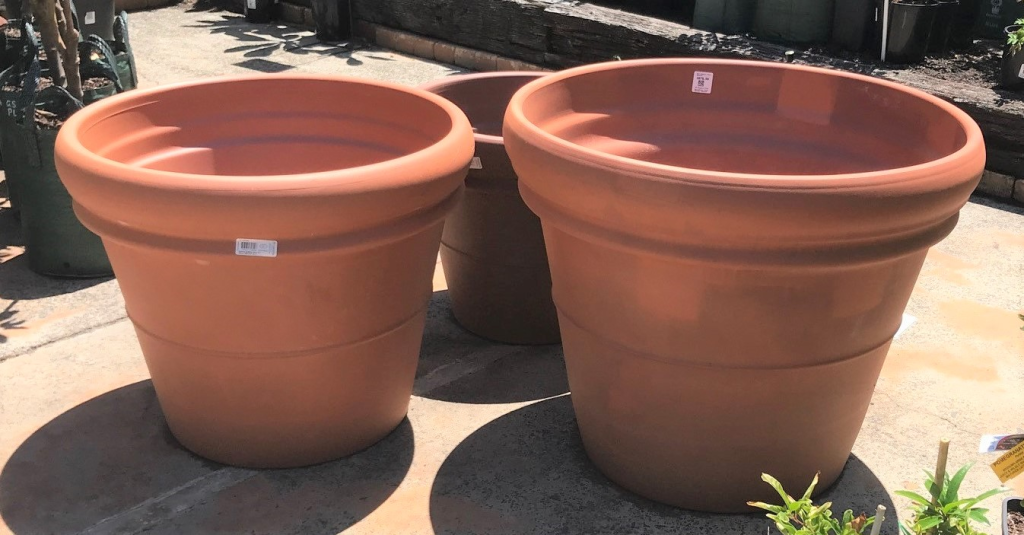
Plastic sits on the other end of the moisture spectrum, locking water in during long summer breaks or for thirsty ferns, yet it can overheat on sunny balconies unless shaded. Plastic pots are very affordable and come in many different colors and variations.
Metal ranks high in modern aesthetics and durability but swings with temperature, scorching roots in direct sun and chilling them in winter. They are generally long-lasting and resistant to pests and rot, making them a good investment for many gardeners. However, the initial cost can be higher than other materials.
There is no wrong or right potting material so mix these container types around the patio to match climate shifts and each plant’s thirst level keeping in mind the pros and cons outlined in this section.
Choosing the Right Pot Size for Your Plant’s Needs
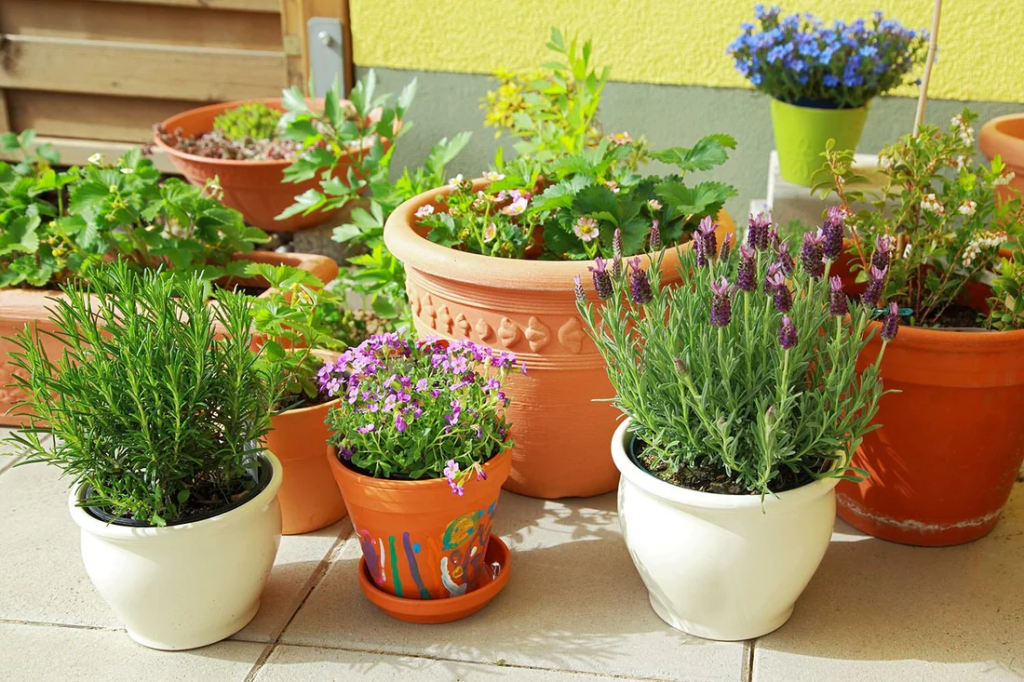
Sizing your pot just right keeps roots breathing and soil draining by using this section’s plant pot size guide. When repotting plants, moving up only 1–2 inches in diameter around your plant’s root ball gives roots room without drowning them in extra soil that hangs onto water too long. That tactical increment helps to avoid rootbound tangles while also sidestepping a soggy mix that sparks rot.
Check for circling roots or escapees from drainage holes. Those signs signal the need for a container size upgrade. Stick to breathable materials with drainage holes and match depth to root type, and use shallow pots for herbs. Keep these quick pot sizing tips handy every repotting season.
Ensuring Proper Drainage for Healthy Roots
Healthy roots need space to breathe, so prioritize pots with reliable drainage for potted plants that let excess water escape and prevent root rot. Stick with pots that have drainage holes, or slip a plastic grow pot into a decorative cachepot so runoff still exits freely.
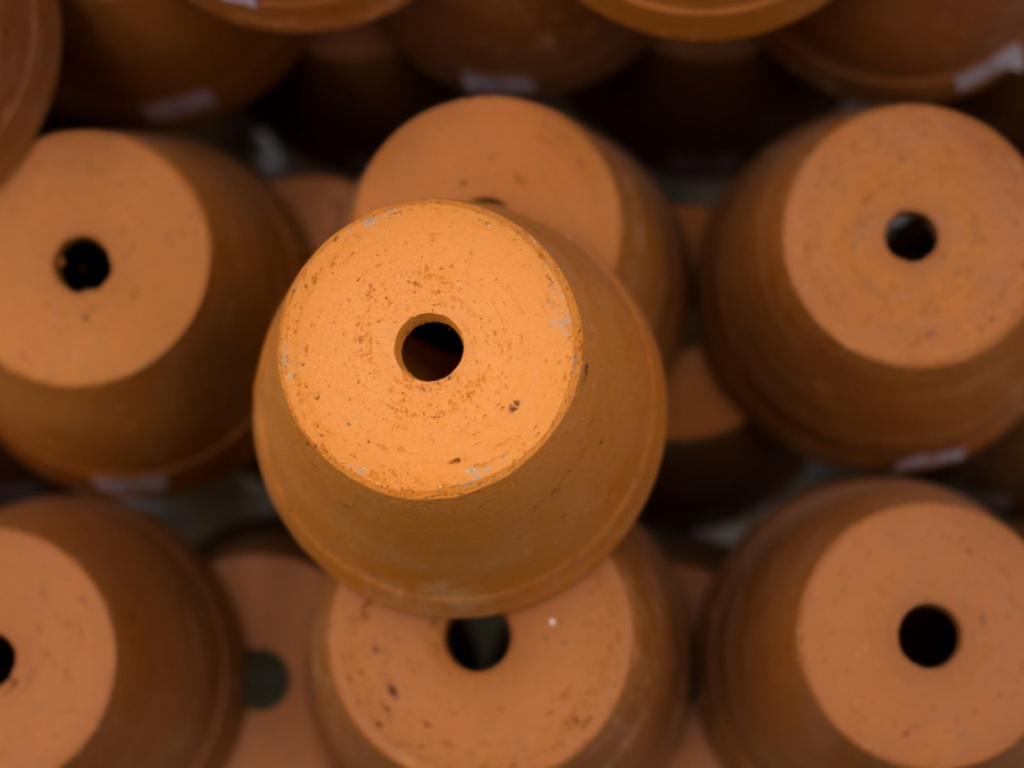
Fancy pot sealed shut? Add a slim gravel or charcoal layer topped with mesh and keep the soil above it. Water settles below, not around the roots. Empty saucers promptly and refresh the potting mix each year. These practical container drainage tips keep moisture balanced and roots thriving.
Author’s Note: Check out our post on How To Water Container Plants Properly where we share watering tips and tricks to keep your potted plants hydrated.
Matching Pot Style with Your Garden Aesthetic
Pulling your garden together starts with the pots. Earth-toned clay settles into leafy borders, while glossy black cylinders sharpen a modern patio. Match pot color with nearby stone, decking or blooms to keep the view calm. Texture and scale matter too: chunky concrete grounds tall palms, ribbed terracotta softens cottage beds.
Choose decorative plant pots whose hue lifts, not fights, flower tones. Minimalist decks shine with monochrome sets, while tropical corners pop with vivid glazes. Smart garden pot design marries foliage shape to vessel lines. Group stylish garden containers in one finish, then drop a single accent piece for flair, ensuring tidy matching pots and plants harmony.
The Effect of Pot Color on Heat and Light Absorption
Choose wisely, because the shade of a planter directly influences root comfort. Dark pigments pull in solar energy. In summer, soil inside black plastic can rise far beyond air temperature, risking wilted roots.
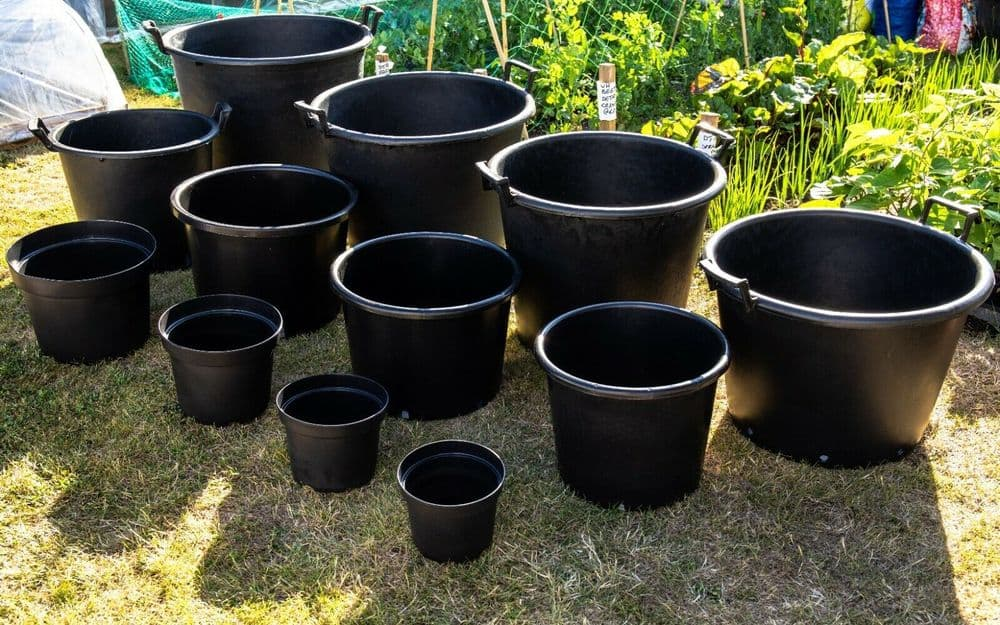
For steady growth in hot zones, shift to light-colored containers, as their reflective surfaces aid temperature control in plant pots by bouncing sunlight away and holding moisture longer.
Growers in short-season regions lean on dark pots for cold climates to bump soil warmth and jump-start germination. Match hue to climate and plant sensitivity, and roots stay in the sweet spot.
Sustainable and Eco-Friendly Pot Options
Reach for eco-friendly plant pots made from coconut coir, rice husks, or bamboo fiber. These sturdy shells breathe, then break down naturally once transplanted, leaving zero plastic behind.
Paper pulp and CowPots molded from cow manure join the club of biodegradable containers, adding nutrients while they decompose.
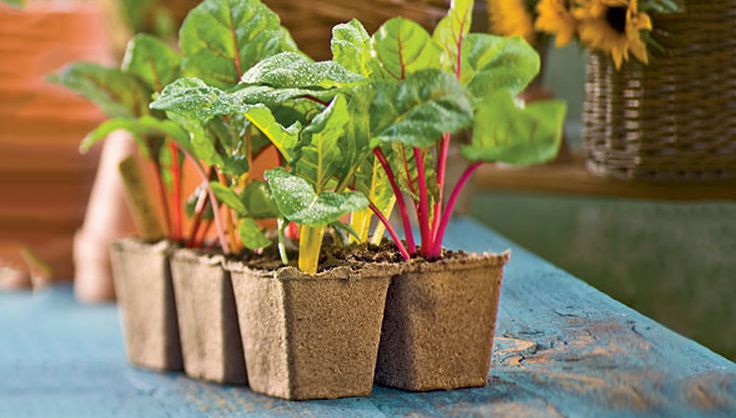
Found On Amazon
Fans of sustainable gardening also rescue coffee tins, yogurt cups, and chipped mugs, drilling quick drainage holes to give waste a second life. Choosing planters molded from recycled pot materials keeps landfills lighter and roots a lot happier.
Smart Buying Tips and Where to Shop for Pots
Before buying plant pots, start by flipping each one. A chip-free rim and thumb-wide drain hole confirm sturdy construction. In store, a tap on terracotta should ring clear, while a gentle squeeze exposes flimsy resin and champions durable fiberglass. Online, zoom into glaze close-ups, check return policies, and scan buyer photos for cracks.
Reliable spots include local nurseries for weight checks, Etsy ceramicists for custom colors, and big-box garden centers with ASTM-rated plastics. And Amazon always has great deals and a customer favorable return policy if needed. Pocket these pot shopping tips, compare materials, and the search for the best garden pots will reward you with truly quality plant containers.
Conclusion: Invest in the Right Home for Your Plants
Choosing a pot that fits roots, drains quickly, and matches your décor ties form to function. Recognizing plant pot importance steers every decision, from breathable clay for desert cacti to lightweight plastic for balcony herbs.
The right container sets up gardening success, preventing root rot while giving soil space to breathe, which pays off with consistently healthy plants. Size, drainage holes, and material all mesh with your watering habits, light levels, and style, turning a basic vessel into the backbone of plant care.
Pick your perfect pot, tuck in your seedling, and share your bloom before and after in the comments below!

